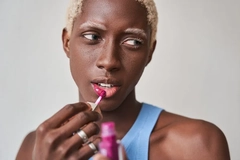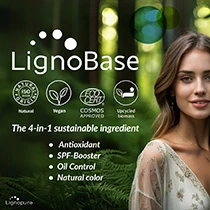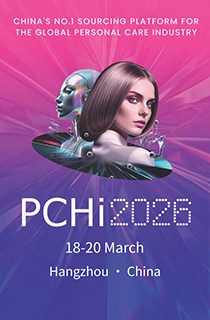Women’s care steers toward reducing stigma and personalizing the reproductive health journey

Getting personal is nothing new in women’s care trends, but today, this has a little more meaning as brands are witnessing a rise in demand for personalized care that can accompany women’s journeys through menstruation and menopause. As the products get more intimate, the conversations around women’s health are getting louder to increase awareness and draw attention to products.
Personal Care Insights interviews spokespeople from three companies working in the hygiene, healthy aging, and reproductive health space to discuss how actively destigmatizing health topics increases customer activity in women’s care.
Over the Bloody Moon, a menopause health advocacy and consulting agency; Thermaband, a digital menopause device developer; and Intimina, a company that makes menstruation products, spoke to us about knocking down the societal barriers that prevent women from seeking health resources and products.
Research has shown that internalized stigma around women’s reproductive health — which includes menstruation and menopause — is a barrier to people who need to seek help. According to the Harvard T.H. Chan School of Public Health, shame can lead to silent suffering, where women isolate themselves and avoid relieving painful or uncomfortable symptoms.
When stigma is reduced or removed, women are more likely to seek health services, says the US Office on Women’s Health. For this reason, companies and organizations that focus on women’s reproductive health are on the front lines of destigmatizing the very products and resources that offer relief to current and potential consumers.
Breaking down stigma and barriers to resources
One company destigmatizing menopause conversations is Over The Bloody Moon, a UK-based advocacy and health consulting group that has created a menopause simulator called the MenoVest. This device is a wearable thermal vest that simulates the sudden onset of hot flashes. The device is used in training and advocacy events to help people experience the discomfort of a hot flash as they attempt to go about normal workplace activities.
“We wanted to find a way to open up the conversation and bring everyone into the party,” says Lesley Salem, the founder of Over the Bloody Moon, as she describes the idea behind creating the MenoVest.
“Simulators engage people who otherwise wouldn’t be interested in the topic when it isn’t relevant to them. So we found a way for people to experience some of the most commonly associated symptoms with menopause,” she says.
The company had previously collaborated with the US brand Somedays, which also has a period pain simulator that sends electrical pulses to the wearer’s abdomen, simulating menstrual cramps and endometriosis pain. Somedays sells herbal teas, cramp creams, and other period pain relief products and has amassed a large social media following, more than 700,000 followers on TikTok, due to its viral period pain simulator posts.A man trying on the MenoVest hot flash simulator. Photo courtesy of Over the Bloody Moon.
Representatives from both Over the Bloody Moon and Somedays attend trade shows, workplace workshops, and other public events with the hot flash and period pain simulators, enticing people — particularly men — to experience them.
Besides being an amusing gimmick, the MenoVest prompts real conversations around health, comfort, and pain, bridging a meaningful gap between those who suffer these symptoms and those who don’t.
“It gets a conversation going between men and women that might never have existed, and in the workplace, a conversation between managers and people on their team. It does destigmatize and normalize the conversation, allowing people to talk about pain and what they can do to support," says Salem. Over the Bloody Moon has just made its own period pain simulator, called the Crampsa.
Breaking the silence over a seemingly taboo subject is the first step in destigmatizing personal health, and Dunja Kokotovic, the global brand manager for Intimina, agrees that sometimes this takes creativity. Kokotovic describes the multiple campaigns the company has done to bring menstrual pain to the fore.
“Breaking the stigma around menstruation and reproductive health is at the heart of everything we do. Through award-winning campaigns like The Period Crunch and Pantone Period Color Red, we’ve sparked bold conversations to normalize periods and dismantle societal taboos. We’ve also used our platform to shed light on conditions like endometriosis, which are often underdiagnosed due to stigma and lack of awareness,” says Kokotovic.
Intimina sells menstruation and pelvic floor health products, like period cups and kegel trainers. The Swedish intimate care and hygiene company created The Period Crunch, a campaign that made uterus-shaped breakfast cereal in a creative bid to normalize conversations about periods and women’s health. Similarly, Intimina’s partnership with color creator Pantone made Period, “an energizing and dynamic warm red shade encouraging period positivity.”
For brands like Intimina, these campaigns are more than just an advertisement or a viral moment. It is about normalizing personal health issues so that women feel encouraged to seek the resources and products that Intimina provides.
“Beyond campaigns, we strive to provide education and resources to help people better understand their bodies and feel empowered to seek care for their health concerns,” says Kokotovic. “By fostering a judgment-free space for dialogue, we’re helping to create a world where menstruation, menopause, and pelvic health issues are seen as normal, not shameful, parts of life.”
Changing the consumer environment
As these barriers come down, companies are seeing a more engaged and excited consumer environment. Customers are not just shopping but also interacting with the company.
“Today’s consumers are more informed and proactive about their health. They want products that not only solve a problem but also align with their values, whether it’s sustainability, safety, or inclusivity,” says Kokotovic. Thermaband CEO Debbie Dickinson. Photo courtesy of Thermaband.
Thermaband CEO Debbie Dickinson. Photo courtesy of Thermaband.
Debbie Dickinson, the co-founder and CEO of Thermaband, echoes the same sentiment. Dickinson says she is witnessing an increase in menopausal women who are empowered and engaged as shame connected to this natural life event decreases. As a result, these women are increasingly interested in seeking products that will help them feel comfortable and independent.
“We have made great strides in reducing the shame, isolation, and ignorance surrounding menopause symptoms and its profound impact on our physical, mental, and economic well-being. We still have a way to go, but society recognizes the demand for research and innovation in women’s health and the consumer’s willingness and ability to pay for desirable and sustainable products,” says Dickinson, whose company makes wearable tech devices.
Dickinson’s company has designed a wearable thermostat and health tracker called the ThermabandZone. This device provides targeted cooling and warming relief to the wearer at the onset of sudden body temperature swings. The tracker also records this data to adapt to the wearer’s “normal” temperature zone and show the number of deviations from this base.
The customer can then bring their data to doctor’s visits and help improve conversations with their health care providers. Information can improve someone’s personal menopause journey, says Dickinson.
“We have recognized that women were interested in immediate relief to manage debilitating hot flashes and thermal discomfort, using a natural tech solution and digital health insights to achieve personalized care. The Thermaband Zone wearable empowers women with comfort on demand and data to share with their clinicians for menopause symptom management,” she says.
Intimate trends in women’s care
The enthusiasm and engagement within the women’s care market are spurring trends that promote personalized health solutions and value alignment.
“As a brand dedicated to women’s intimate health, we are noticing a growing trend toward more holistic, sustainable, and personalized approaches to personal care. Women are seeking products that meet their physical needs and align with their values,” says Kokotovic. Intimina recently launched a line of period underwear.
Intimina recently launched a line of period underwear.
Intimina has responded to this by expanding its portfolio of menstrual and pelvic health products, such as medical-grade silicone menstrual cups and the brand’s newly launched Bloom Period Underwear. The underwear tauts an EKO-TEX certification, meaning the underwear is produced without the use of toxic chemicals.
This emphasis on safety is in response to recent discoveries that popular tampon brands can contain toxic heavy metals like lead. As a result, consumers are paying close attention to what goes into manufacturing intimate products.
“There’s a greater emphasis on education and empowerment, with women wanting to understand their bodies better and have access to resources that guide them through life stages like menstruation, pregnancy, postpartum, and menopause,” says Kokotovic.
Salem says that Over the Bloody Moon is increasingly partnering with pharmaceutical companies and personal care brands who are looking to innovate in personal and sexual wellbeing for customers. The brand has partnered with companies like Twinnings Tea, Proctor and Gamble’s Always Discreet, and Dr. Reddy’s Laboratories to support market insight regarding menopausal consumers.
Although the MenoVest simulator was created to share menopause experiences, people who undergo cancer treatments also suffer from hot flashes, says Salem. As a result, the simulator is increasingly requested for demonstration by health care professionals looking to understand a broad spectrum of patient needs better.
Similarly, Dickinson says Thermaband is also responding to the demand to support hot flash relief for cancer patients.
“A variety of hormonal events, including menopause, cancer treatments, and a variety of medical conditions can trigger hot flashes. We intend to expand our market and offer relief and insights to be the leading solution for thermal health with global impact,” she says.
Dickinson sees healthy aging, disease treatment, and women’s care trends intersecting around data tracking and using technological advances to help manage midlife health. AI-driven health wearables will innovate this space as people take ownership of their personal care, she says.
“We are excited to elevate women’s health and wellness through innovation that is both valuable for women and their clinicians in achieving personalized care,” says Dickinson. “We are thrilled to see women embrace midlife as they are open about their journeys and experiences.”












